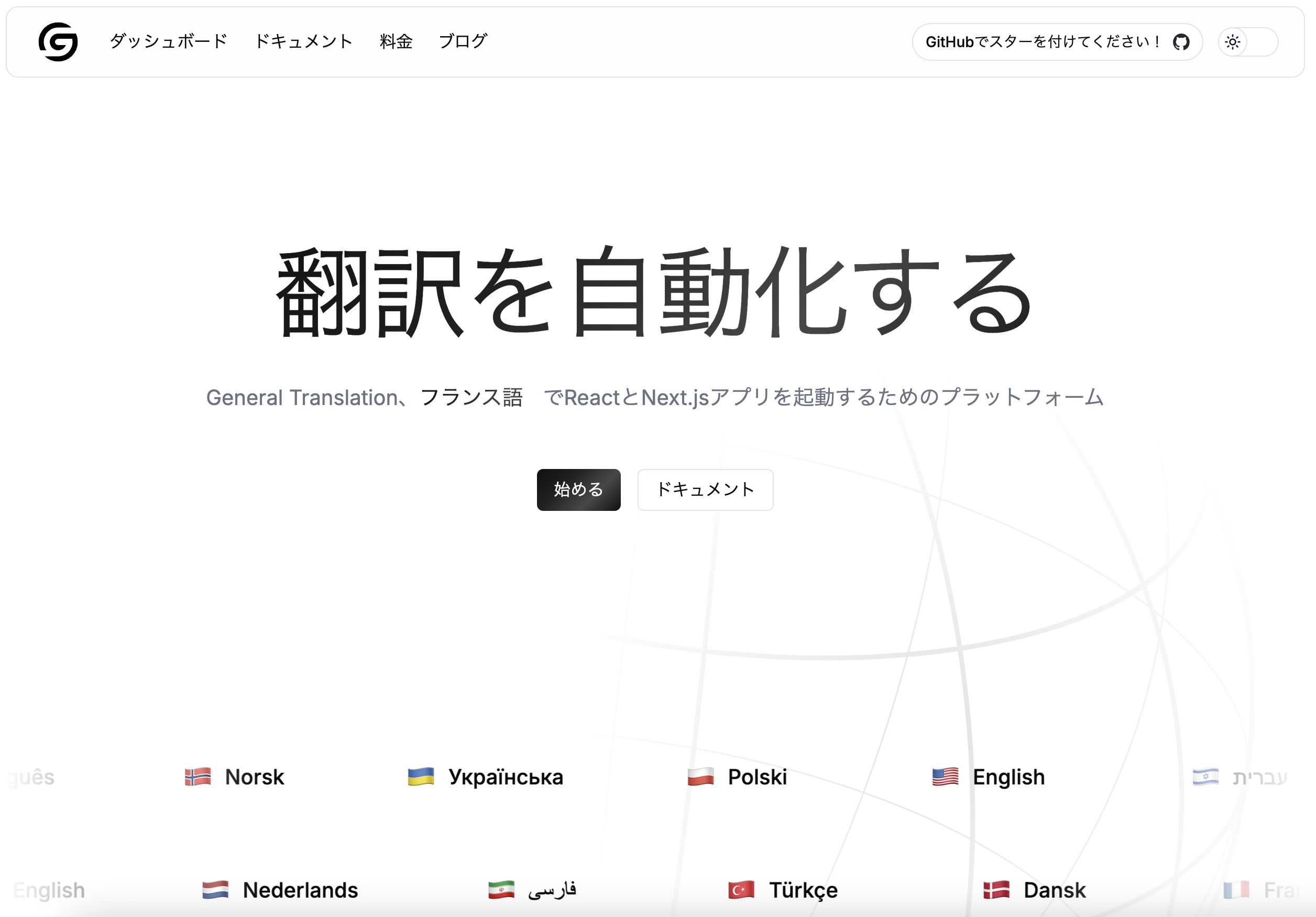Launching gt-next
Internationalization (i18n) sucks. We’re building a Next.js library, gt-next, to make it easier. Today we’re launching it in open beta.
npm i gt-nextWith gt-next, translating your JSX content looks like this:
import { T } from 'gt-next'
export default function Page() {
return (
<T id="my_id">
<p>That's it! Wrap your JSX and it will be translated!</p>
</T>
)
}That means:
- No painful codebase rewrites
- No waiting days for translations
- Translations delivered right in your development environment
Just add some environment variables, run npx translate, and you’re done.
The goal with gt-next is to create an abudance mindset around translations. The web should be multilingual by default. And multilingual sites should work in 50 languages, not 5.
- Give a ⭐ to gt-next on GitHub
- Get an API key 🔐 on our platform
- Read the docs 📄
What you can do with gt-next
Format variables and plurals
import { T } from 'gt-next'
export default function Page() {
const count = 2
return (
<T id="my_id">
<Plural
n={count}
singular={
<>
I have <Num /> book
</>
}
>
I have <Num /> books
</Plural>
</T>
)
}Use a developer API key to see translations locally
GT_API_KEY="gtx-dev-cae62d6fe1e33bda603c9a2926ab0fb8"
GT_PROJECT_ID="abcdef12-3456-789a-bcd4-ef123456789a"
Support over 100 languages out of the box, with on-demand translation.

Edit your translations with an interactive JSX translation editor..
